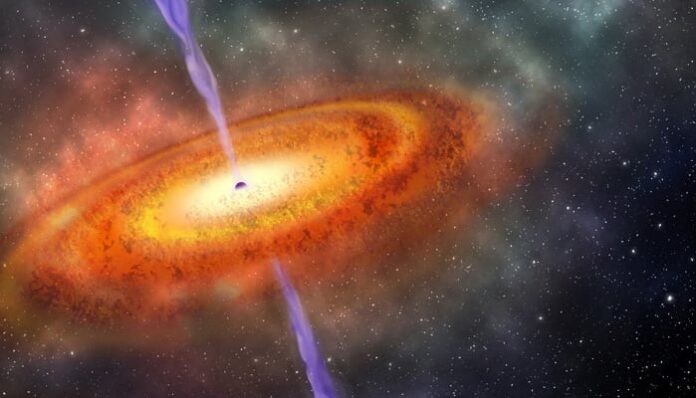The James Webb space telescope has once again expanded our understanding of the cosmos by enabling scientists to make remarkable discoveries. As part of the Cosmic Evolution Early Release Science (CEERS) Survey, researchers have identified the most distant active supermassive black hole observed to date. Through the near- and mid-infrared images captured by the James Webb telescope, scientists have unlocked new insights into the formation and behavior of these enigmatic celestial objects.
CEERS 1019: A Record-Breaking Discovery of the Most Distant Active Supermassive Black Hole
The CEERS Survey has unveiled CEERS 1019, a galaxy housing the most distant active supermassive black hole ever recorded. The black hole is estimated to have formed a mere 570 million years after the Big Bang, making it an incredibly ancient object. With a mass of approximately 9 million times that of the Sun, CEERS 1019 is significantly smaller than previously discovered active supermassive black holes. The data obtained from the James Webb telescope has revealed that this black hole is voraciously consuming gas and triggering the formation of new stars. Scientists suggest that a galaxy merger might be contributing to the heightened activity in CEERS 1019’s black hole, potentially leading to increased star formation.
CEERS team lead Steven Finkelstein from the University of Texas at Austin said: “Until now, research about objects in the early universe was largely theoretical. With Webb, not only can we see black holes and galaxies at extreme distances, we can now start to accurately measure them. That’s the tremendous power of this telescope.”
Shedding Light on Early Black Hole Formation
The discovery of CEERS 1019 and two other ancient, smaller black holes through the CEERS Survey is shedding light on the early universe. The CEERS 1019 black hole, similar in size to the one at the center of our galaxy, signifies the presence of smaller black holes during the early stages of the universe. Scientists had theorized their existence, but the James Webb telescope’s operational capabilities have now confirmed their presence. Furthermore, the telescope’s data has allowed astronomers to identify additional distant black holes resembling ordinary star-forming galaxies.
Researchers remain puzzled as to how CEERS 1019 formed so soon after the universe’s birth. However, the wealth of data gathered by the James Webb telescope holds promise for unraveling the mysteries surrounding the formation of early black holes. By accurately measuring and analyzing these celestial objects, scientists hope to gain deeper insights into the processes that shaped the early universe.
Also read: Scientists Successfully Grow Plants in Moon Soil for the First Time


























